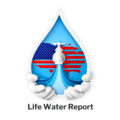In the quest for optimal health for our children, what they drink becomes paramount. Alkaline mineralized water has gained attention for its purported health benefits, but concerns linger about its suitability for children. In this comprehensive guide, we delve into the safety and benefits of alkaline mineralized water for children of different age groups.
The Importance of Water Quality for Children
Water is the essence of life, and it is especially important for children whose bodies are still developing. However, conventional tap water often contains contaminants like microplastics, fluoride, and toxins, posing potential health risks. Hence, the need for safer alternatives like alkaline mineral water arises.
Understanding Alkaline Mineralized Water
Alkaline mineralized water is distinguished by its higher pH level and enriched mineral content than regular tap water. These minerals, such as calcium, magnesium, and potassium, contribute to its potential health benefits, including enhanced hydration and antioxidant properties.

Benefits of Alkaline Mineralized Water for Children
1. Enhanced Hydration
Alkaline water’s negatively charged water molecules and mineral content facilitate superior hydration, crucial for children’s overall well-being.
2. Improved Digestion
Alkaline mineralized water has been linked to reduced occurrences of acid reflux, promoting better digestion among children.
3. pH Regulation
Maintaining optimal blood pH levels is vital for circulation and overall health, a benefit provided by alkaline mineralized water.
4. Antioxidant Properties
Rich in antioxidants, alkaline mineralized water helps eliminate harmful free radicals, bolstering children’s immunity and cellular health.
Safe Consumption Guidelines for Different Age Groups

Infants (0-12 months)
- Breast milk or formula remains the primary source of hydration.
- Introduce mineralized water in small amounts (pH 1.0 to 6.5) after the age of one, gradually increasing intake.

Toddlers (1-3 years)
- Incorporate mineralized water into their diet, but avoid excessive consumption to prevent water intoxication.
- Aim for a daily intake of 44 fluid ounces with a pH range of 8.5 to 9.0.

Preschoolers (3-5 years)
- Active preschoolers can safely consume up to 44 oz of mineralized water per day, with a pH range of 8 to 8.5.
School-Aged Children (6-12 years)
- Gradually increase intake to approximately 65 oz per day, emphasizing balanced consumption with other beverages.

Teenagers (13-18 years)
- Aim for a daily intake of 2 to 3 liters with a pH level ranging from 9.5 to 9.7, considering their ongoing physical development.
Safety Measures and Recommendations
- Avoid giving alkaline water 30 minutes before or after administering medications to children.
- Refrain from consuming alkaline water around meal times to maintain a neutral digestive environment.
Conclusion
Alkaline mineralized water can be a safe and beneficial choice for children when consumed in moderation and adhering to age-appropriate guidelines. By understanding its benefits and following recommended consumption practices, parents can contribute to their children’s overall health and well-being.
Experience the purity and health benefits of alkaline mineralized water with our range of filtration systems. Visit our website Life Water Report today and choose a healthier future for your child.
From initial pre-filtration to alkaline enhancement, our systems Guarantee water purity and freshness. Experience the purity of NSF 42 and NSF 61 Certified filtration material, ensuring your hydration is free from impurities. With Lifetime Guarantee, trust in our commitment to quality and sustainability. Elevate your drinking water experience today with scientifically proven 40 health benefits! click here
